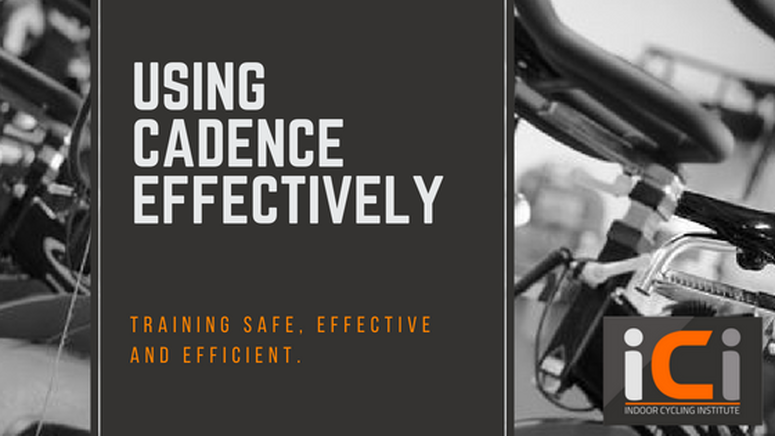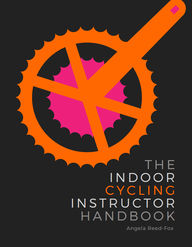by Angela Reed-Fox Using cadence effectively in indoor cyclingTraining with cadence Training with cadence enables you to train for different outcomes. There is a range that is safe and effective – coaching outside this range can put riders at increased risk of injury and render a workout ineffective (or suboptimum at best), even for seasoned cyclists. Within the safe, effective range of 60-110rpm you can pinpoint narrower ranges in order to train to a specific rationale. Defining your challenge Resistance and cadence together will define your challenge. Although indoor cycling is a highly effective way of training for the road, there are necessary departures where indoor cycling is a little different. In the studio, 60-80rpm is the range used for climbing and higher resistance work, and 80-110rpm is a flat road requiring faster work. On the road, you would naturally find a faster cadence to prevent fatigue, in the studio we use different cadence to improve on technique and maximise gains. Most road cyclists train at cadences above 80rpm with a lowr resistance whether climbing or not in order to reduce strain on joints and to reduce fatigue by focusing on slow-twitch muscle fibres. Cadence and technique Coaching technique is essential for all riders – you may sometimes come across riders who are keen to pedal beyond 120rpm; it is very rare to see this done well even (or especially) among those riders accustomed to riding on the road. In a class setting, in order to ensure maximum effectiveness for all riders, it is better to coach within the broad range specified; you can then coach effective technique, and riders can more easily feel the difference when they are riding effectively. Cadence - choosing the right tool for the job Focusing on narrower ranges enables you to keep the class together, and instruct effective challenges. 60-70rpm is a heavy, challenging climb (or ride into a headwind), resistance should be high - at this cadence you are promoting the use of fast twitch muscles and challenges will necessarily be short due to the muscle fibres' limitations. 70-80 provides a steadier 'working' climb. This calls on the slower twitch muscles and is a good cadence for an endurance climb (in or out of the saddle). A slightly higher cadence – 80-90rpm is great for coaching power intervals or for a steadier flat road/timetrial. At this pace it is easier than with the higher cadences to embed good pedalling technique. At 90-100rpm this is optimum timetrialling cadence and many riders find their comfort zone is here. Resistance is lighter than before, and you're heading for endurance. The fastest cadence you're coaching is 100-110rpm. This is more of a sprinting pace. When you instruct a sprint, ensure that riders know to add resistance on rather than just spin the legs. Fast legs with insufficient resistance on a bike with a weighted flywheel does not provide the required biofeedback for neuromuscular conditioning – the road cycling version would be tackling a long flat road in the granny ring; lots of flapping legs, but no distance covered. There's a reason why pro-cyclists don't train like this! Being clear with cadence With a class of riders, necessarily there will be a mix of abilities and levels of fitness even in the more tailored class setups; this makes effective instruction all the more important. You can effectively coach a class while being quite prescriptive with the cadence you expect from riders – you just need to be sure to describe how the appropriate resistance should feel (using positive language, of course!) so that each rider can replicate the challenge you set on their own bike. Only with the very highest cadences in the range will you need to offer other options to very new riders or those requiring special attention. Otherwise, cadence is a great leveller – all riders can tackle it while employing the level of resistance that is right for them. Indoor cycling instructor? Click below for free CPD resources. Your venue can also receive information on how we can help improve customer registration, retention, engagement and profitability.
0 Comments
Leave a Reply. |
Categories
All
|
Quick links
Get started
|
Find what's right for you
|
Courses
|
Further learning
|
More
|
The Indoor Cycling Institute provides the most comprehensive and up to date indoor cycling instructor training; providing entry-level courses, and further education to raise the standard of instructors.
© 2014-2024 Protheorem Ltd
The Indoor Cycling Institute is owned and operated by Protheorem Ltd Registered in England & Wales, Company number 12812092
The Indoor Cycling Institute is owned and operated by Protheorem Ltd Registered in England & Wales, Company number 12812092




